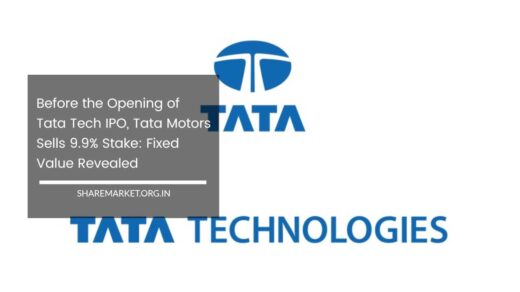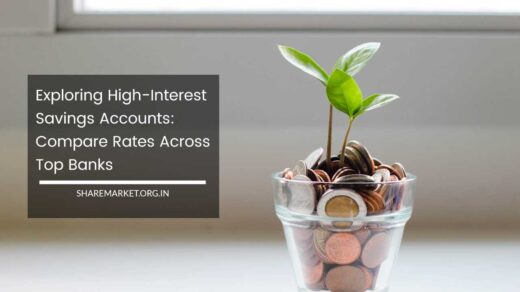Top 5 Safe Investment Options in India

Safe Investment Options
Top 5 Safe Investment Options in India
India’s diverse financial landscape provides a variety of investment opportunities tailored to different risk profiles and financial goals.
For investors prioritizing safety and stability, certain options stand out due to their low-risk nature and consistent returns.
This comprehensive guide delves into the top 5 safe investment options in India, exploring their features, benefits, risks, and critical considerations to aid in making informed investment decisions.
Understanding Safe Investments
Before exploring specific investment options, it’s crucial to define what makes an investment “safe.” Safe investments are characterized by:
Low Risk
Safe investments are designed to minimize the risk of capital loss. They are typically backed by government guarantees or are offered by financially stable institutions, which significantly reduces the likelihood of losing your principal amount.
Stable Returns
Although safe investments may not offer the highest returns, they provide consistent and predictable growth. This stability is essential for investors who value reliability and are wary of market fluctuations.
Liquidity
Liquidity refers to how easily an investment can be converted into cash without substantial loss of value. Safe investments generally offer reasonable liquidity, allowing investors to access their funds with minimal penalties.
It’s essential to acknowledge that no investment is entirely risk-free. Even the safest options can be influenced by economic conditions, policy changes, or unforeseen events. Therefore, diversifying across different asset classes is a prudent strategy to mitigate risks.
Top 5 Safe Investment Options in India
1. Fixed Deposits (FDs)
Fixed Deposits (FDs) are among the most popular and secure investment options in India. Offered by banks and post offices, FDs provide a fixed interest rate for a predetermined tenure, ensuring predictable returns.
Key Features:
- Guaranteed Returns: The interest rate on an FD is fixed at the time of deposit, guaranteeing a return on your investment. This predictability is highly valued by conservative investors.
- Flexible Tenures: FDs are available for various tenures, ranging from a few months to several years. This flexibility allows investors to choose a duration that aligns with their financial goals and needs.
- Senior Citizen Benefits: Many banks offer higher interest rates on FDs for senior citizens, providing an additional benefit for this demographic. This can be particularly advantageous for retirees seeking a stable income stream.
- Tax Benefits: While the interest earned on FDs is generally taxable, certain tax-saving FDs with a 5-year lock-in period qualify for tax deductions under Section 80C of the Income Tax Act. These tax-saving FDs can help reduce your taxable income.
Risks:
- Inflation Risk: One of the primary risks associated with FDs is inflation risk. The interest rate on FDs may not always keep pace with inflation, potentially eroding the purchasing power of your money over time.
- Liquidity Risk: Although premature withdrawal is usually allowed, it may attract penalties and reduce the overall returns. Investors need to weigh the benefits of fixed returns against the potential costs of early withdrawal.
Example Scenario
Consider an investor who opts for a 5-year FD with a fixed interest rate of 6% per annum. Over the tenure, they will receive their principal plus interest at maturity. However, if inflation rises significantly during this period, the real value of their returns may be diminished.
2. Public Provident Fund (PPF)
The Public Provident Fund (PPF) is a government-backed long-term investment scheme that offers a high degree of safety and attractive tax benefits. It is particularly suitable for individuals seeking a secure investment with long-term growth.
Key Features:
- Tax Benefits: Contributions to the PPF qualify for tax deductions under Section 80C of the Income Tax Act. Additionally, the interest earned and the maturity amount are tax-free, providing a significant tax advantage.
- Long-term Returns: PPF offers a competitive rate of interest, compounded annually. This helps in accumulating a substantial corpus over the 15-year tenure of the scheme. The interest rate is revised quarterly, but it has historically remained stable.
- Loan Facility: After three years of contribution, you can avail of a loan against your PPF balance. This can be useful in times of financial need, offering additional flexibility.
- Partial Withdrawal: Partial withdrawals are allowed from the sixth year onwards, providing some liquidity while maintaining the long-term benefits of the investment.
Risks:
- Liquidity: The money invested in PPF is locked in for a 15-year tenure. While partial withdrawals are allowed from the sixth year, the long lock-in period may not be suitable for those needing more immediate access to funds.
- Interest Rate Risk: The interest rate on PPF is determined by the government and can fluctuate. While it has been relatively stable, changes in government policy can impact returns.
Example Scenario
An investor contributes ₹1,50,000 annually to a PPF account for 15 years, benefitting from compounded annual interest. The final maturity amount will be tax-free, providing a substantial return on investment. However, the investor must plan for the long lock-in period and the potential for fluctuating interest rates.
3. National Savings Certificates (NSCs)
National Savings Certificates (NSCs) are another government-backed investment option designed to offer a secure way to grow savings. They are particularly popular among conservative investors seeking fixed returns.
Key Features:
- Tax Benefits: Investments in NSCs qualify for tax deductions under Section 80C of the Income Tax Act. This helps reduce your taxable income for the financial year. The interest earned is taxable, but the initial investment provides a tax advantage.
- Fixed Returns: NSCs provide a fixed interest rate for the duration of the investment. The returns are guaranteed, making it a stable option for risk-averse investors.
- Easy Availability: NSCs can be purchased at post offices, making them easily accessible to a wide range of investors across the country.
Risks:
- Liquidity: NSCs have a fixed tenure, with a lock-in period that makes them less liquid. Premature withdrawals are generally not allowed, which can be a drawback if immediate access to funds is needed.
- Interest Rate Risk: The interest rate on NSCs is subject to changes based on government policy. While historically stable, fluctuations in rates can impact overall returns.
Example Scenario
An investor buys NSCs with a 5-year tenure, earning a fixed interest rate of 7% per annum. At maturity, the investor receives the principal amount plus interest. However, since the investment is locked in for 5 years, the investor must be prepared for a lack of liquidity.
4. Senior Citizens’ Savings Scheme (SCSS)
The Senior Citizens’ Savings Scheme (SCSS) is a government-backed investment scheme specifically designed for senior citizens. It offers a higher interest rate compared to other safe investment options, making it an attractive choice for retirees.
Key Features:
- Higher Interest Rates: SCSS offers a higher rate of interest compared to other fixed-income investments, making it particularly appealing for senior citizens. This higher return helps in generating a stable income during retirement.
- Tax Benefits: While the interest earned on SCSS is taxable, the scheme provides some tax advantages, particularly for senior citizens. The interest is paid quarterly, providing regular income.
- Easy Availability: SCSS accounts can be opened at post offices and authorized banks, making it accessible to a broad segment of the senior population.
Risks:
- Liquidity: The money invested in SCSS is locked in for a specific period, usually 5 years, with the option to extend for an additional 3 years. Early withdrawal may incur penalties, affecting returns.
- Interest Rate Risk: The interest rate on SCSS can fluctuate based on government policy changes. While historically competitive, it is subject to periodic revisions.
Example Scenario
A senior citizen invests ₹10,00,000 in SCSS at an interest rate of 8% per annum. The scheme provides quarterly interest payments, ensuring a steady income stream. However, the investor must be mindful of the lock-in period and potential changes in interest rates.
5. Company Fixed Deposits
Company Fixed Deposits (Company FDs) are similar to bank FDs but are offered by companies. While they can offer higher interest rates compared to traditional bank FDs, they come with additional considerations.
Key Features:
- Potential for Higher Returns: Company FDs often provide higher interest rates than bank FDs, which can enhance returns. Companies offer these higher rates to attract investors.
- Flexible Tenures: Various tenures are available, allowing investors to choose a duration that aligns with their investment horizon. This flexibility can be beneficial for aligning with specific financial goals.
Risks:
- Credit Risk: Unlike bank FDs, company FDs are not backed by government guarantees. There is a risk of default if the issuing company faces financial difficulties. It is crucial to select reputable companies with a strong financial track record.
- Liquidity: Premature withdrawal from company FDs may attract penalties and could reduce the overall returns. Investors need to carefully consider the terms and conditions before investing.
Example Scenario
An investor deposits ₹5,00,000 in a company FD offering an interest rate of 9% per annum for a tenure of 3 years. While the return is higher than that of a bank FD, the investor should ensure the company has a solid credit rating to mitigate default risk.
Factors to Consider When Choosing a Safe Investment
When selecting a safe investment option, consider the following factors:
Risk Tolerance
Assess your ability to handle market fluctuations and potential losses. Safe investments typically offer lower returns but come with reduced risk. Understanding your risk tolerance will help in choosing investments that align with your comfort level.
Investment Horizon
Determine your investment timeframe. Long-term investments, such as PPF and NSCs, are suited for goals with extended timeframes, while short-term options like FDs may be better for nearer-term objectives. Matching your investment horizon with the right option is crucial for achieving your financial goals.
Financial Goals
Identify your financial objectives and choose investments that align with these goals. For instance, if you seek regular income during retirement, SCSS might be suitable, whereas long-term growth may be better served by PPF.
Tax Implications
Consider the tax benefits and implications associated with different investment options. Some investments offer tax deductions or tax-free returns, which can impact your overall financial strategy. Understanding the tax treatment of each investment can help in optimizing your tax position.
Diversification
Diversify your investments across various asset classes to spread risk. Combining safe investments with other types of assets can help balance potential returns with risk. Diversification reduces the impact of poor performance in any single investment on your overall portfolio.
Final Remarks
India offers a range of safe investment options tailored to different needs and preferences. Fixed Deposits, Public Provident Fund, National Savings Certificates, Senior Citizens’ Savings Scheme, and Company
Fixed Deposits are among the top choices for those prioritizing safety and stability. Each option has its own set of features, benefits, and risks, making it essential to evaluate them based on your financial goals, risk tolerance, and investment horizon.
Safe investments provide stability and predictability, but they are not without their trade-offs. By understanding the characteristics of each investment and carefully planning your investment strategy, you can build a secure financial future while minimizing risks.
Disclaimer: This article provides general information and should not be construed as financial advice. It is recommended to consult with a financial advisor to tailor investment decisions to your specific needs and circumstances.

















